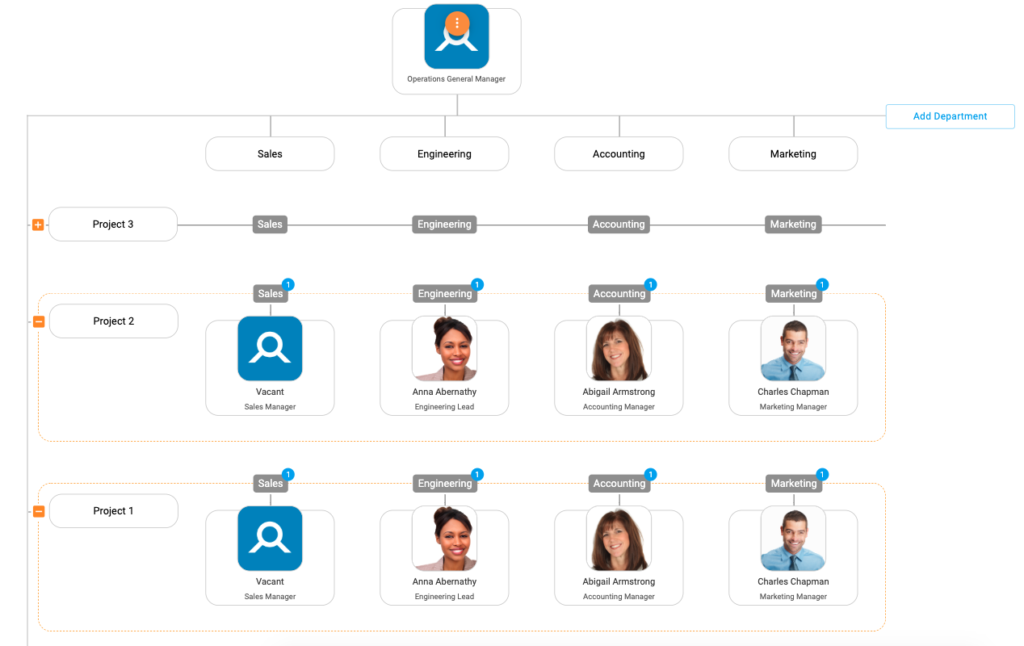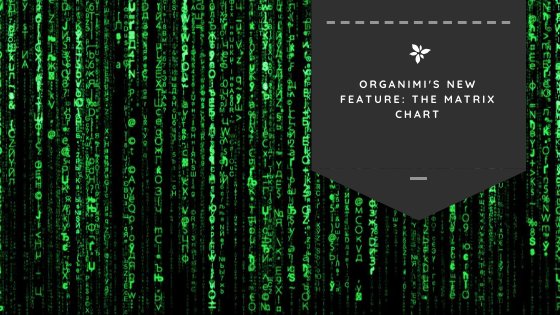At Organimi, we are committed to providing our users with a seamless and easy-to-use org chart solution that caters to every type of company. That is why we have been working hard to bring to our customers a brand-new feature: the matrix chart.
What is a Matrix Org Chart?
The matrix org chart is designed for matrix organizations that are inherently larger and more complex. These organizations have their reporting relationships set up as a grid (or matrix, hence the term “matrix chart”), rather than the traditional linear upwards-flowing hierarchy. In other words, employees have two or more reporting relationships to two or more managers — generally to both a functional and product manager. Other examples of matrix reporting relationships may include reporting to both a HR manager and an area manager or a geographical manager and a product division manager.
In short, an employee (or manager) in a matrix organization has two or more upward reporting lines to different bosses representing different areas of the business, and the matrix org chart accommodates this type of non-linear reporting relationship.
The matrix structure was devised so that large organizations could efficiently manage their very large and complex projects, programs, and problems. The classic linear hierarchical organization system simply could not cope with the added complexities brought on by larger companies conducting larger projects with enormous amounts of information and people where skills are highly fragmented and spread out across different departments.
Hierarchical vs Matrix Org Structures
In the traditional hierarchical structure, everybody within the organization reports to the next person above them until, eventually, information reaches the top. This type of structure is fine in companies where there is a single team working on a single project at any one point in time, however, it is inefficient in companies that are larger, more spread out, and handle multiple projects at once.
In a matrix organization, however, there are two or more chains of command. Employees are accountable to multiple managers who play roles that are more dynamic and fluid rather than fixed due to the absence of a power balance between different managers.
The matter of hierarchical vs matrix structures and what works for who boils down to the needs of individual organizations.
Organimi’s Matrix Org Chart Feature
In response to the growing demand for a matrix option within our cloud-based org chart solution, we created a matrix org chart creation tool with the same high-quality features, ease-of-use, and functionality as our classic hierarchical org chart tool.
Using Organimi, you can create dynamic matrix org charts that cater to a wide range of use cases and needs, such as project management:

Above, you can see an example of a matrix org chart built with Organimi for the management of multiple projects within a company. Each project has four different managers involved in it, all of whom are reported to by individuals in each department working together. All of these managers then report to the Operations General Manager.
Using a Matrix at Your Company
No one system is perfect; each different one has its flaws. If you are considering implementing a matrix structure at your company, we recommend starting small — use it to manage one area of the business — and then fine-tune it as time goes by before implementing it into other areas. There is no one-size-fits-all solution and what works for others will not necessarily work for you.
Where and how far you need to implement a matrix also depends on the size of your company, and you may well find that certain elements of it are better served by the traditional hierarchical structure than by a matrix.
We would like to invite companies that are considering implementing matrix structures to come and try out the beta version of our new matrix charting feature. Contact a member of the team to find out more.

